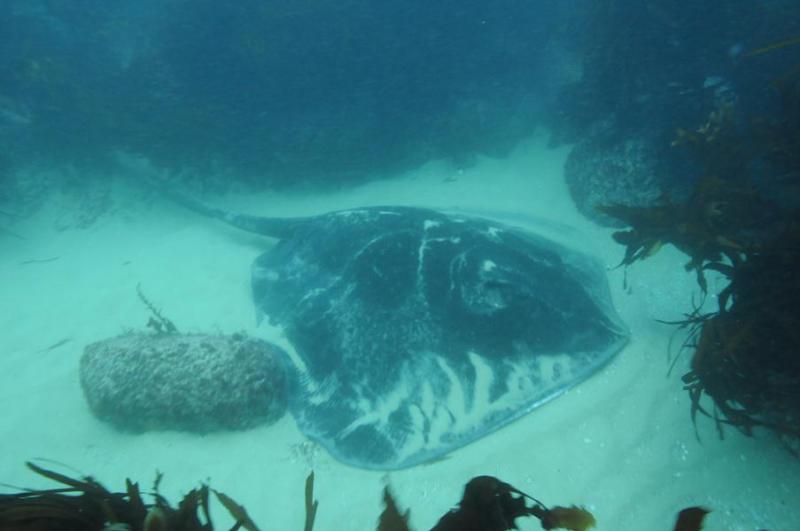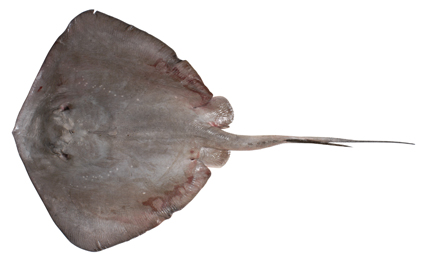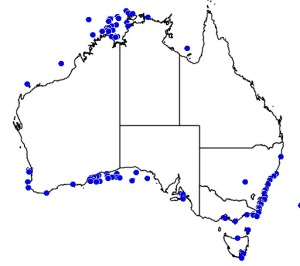�
�
�
���
Dasyatis brevicaudata
Smooth Stingray
Kingdom
Animalia
Phylum
Chordata
Class
Elasmobranchii
Order
Myliobatiformes
Family
Dasyatidae
Genus
Dasyatis
Species
Dasyatis brevicaudata
Colours
Distinguishing features
A large, thick, plain stingray with a bluntly angular snout, and a pectoral disc with round tips; tail thick-based and shorter than body (longer in young); disc smooth except for large, slender thorn on tail in front of stings. Usually has irregular rows of small white spots on the upper surface beside the head and no thorn-like denticles along the dorsal midline of the disc. Often confused with the Black Stingray which lacks white spots on dorsal surface and has rough/sharp denticles along midline.
Size
- Up to 430 cm (TL) - applies to Common length 125cm
- Up to 200 cm (Disc Width) - applies to Disc Width
Depth range
- From 0 m to 476 m - applies to Occurs from very shallow to very deep. Recorded at 476m.
Synonyms
Similar taxa
Distribution
Distribution and habitat preferences
Occurs offshore, on the outer shelf and uppermost slope; sometimes close inshore, in very shallow depths. Found on sandy bottoms, in bays, harbors, and near rocky reefs.
Web resources
Danger
- rarely fatal - The Smooth Stingray is considered more curious than aggressive and is often observed by divers. It usually has two barbs, the first shorter and the second much bigger. The venomous spines (the sting) are capable of inflicting severe or potentially fatal wounds. This species is sometimes observed raising its tail above its back like a scorpion.



